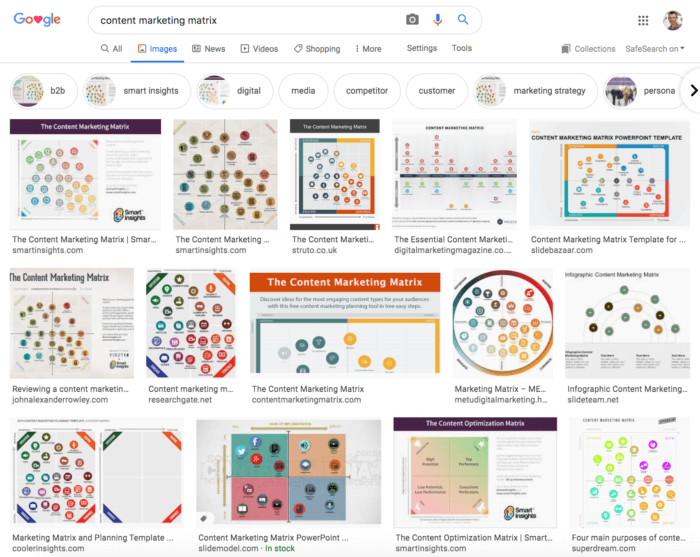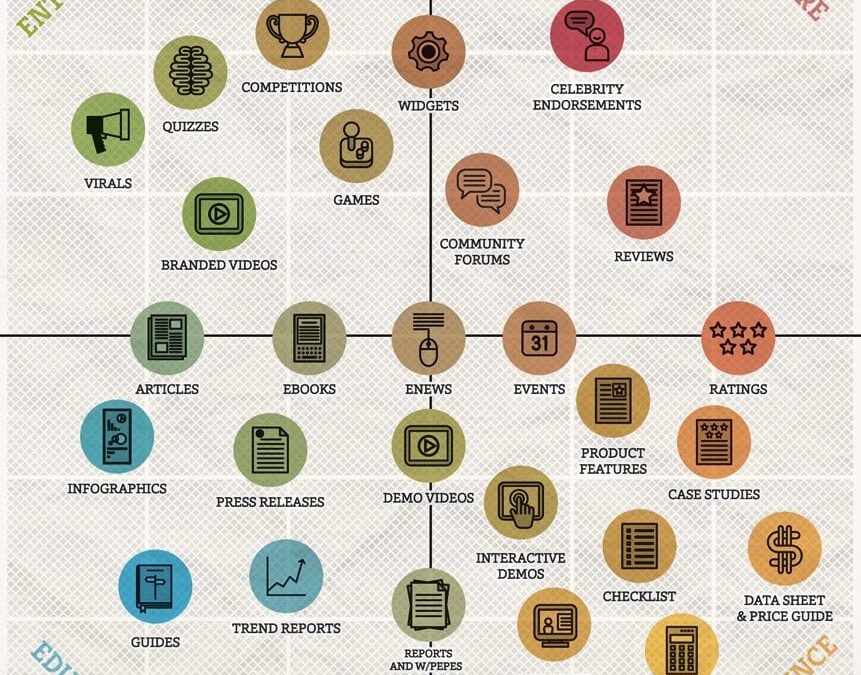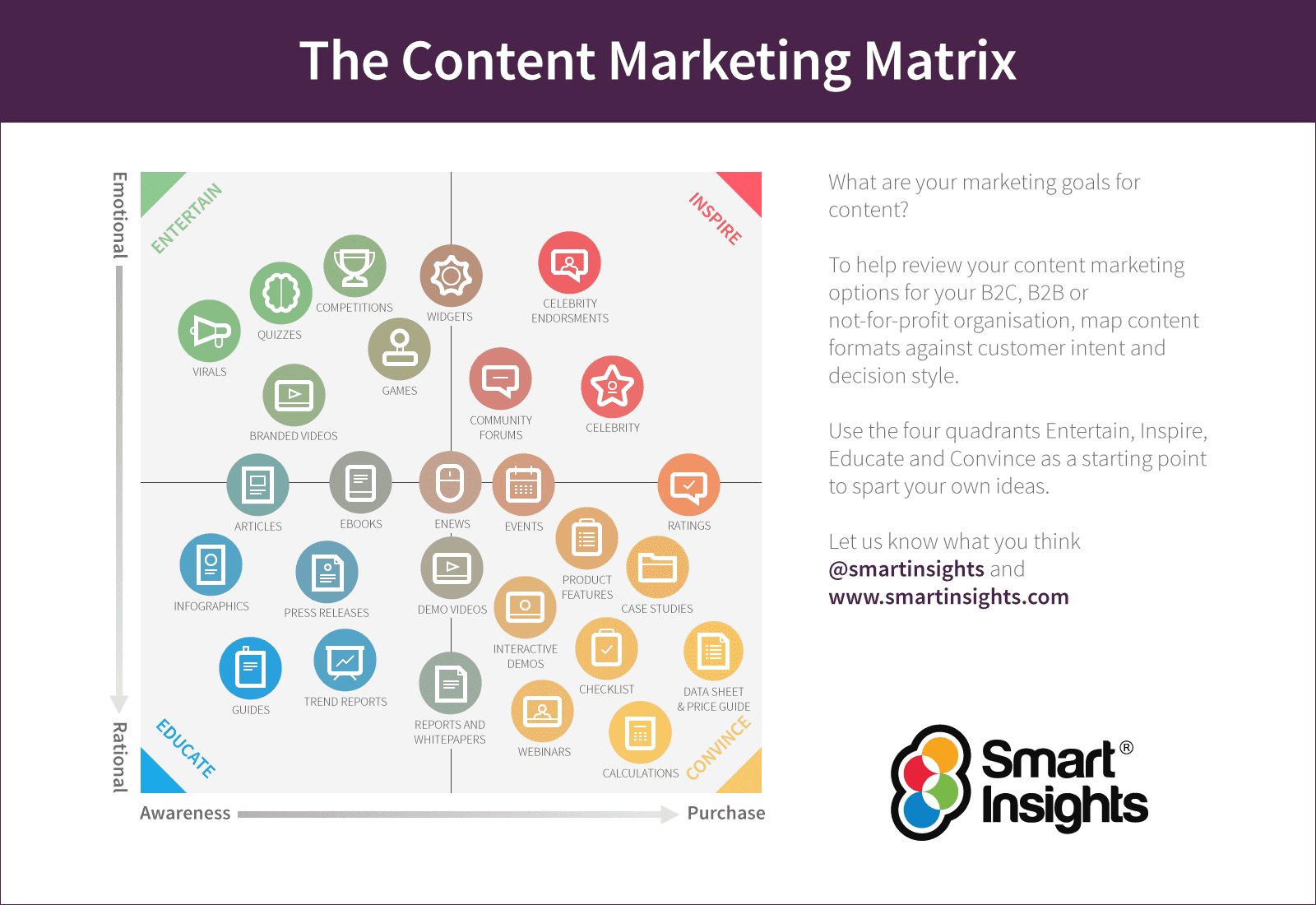A content marketing planning tool to help marketers generate ideas for the most engaging content types for their audiences
We created our Content Marketing Matrix to help our members audit their content marketing assets as part of creating a content marketing strategy. It can also be used for content ideation, i.e. to brainstorm future content ideas to generate leads, nurture prospects, encourage sharing and generate backlinks for SEO. It’s a key part of our strategic approach to content marketing detailed in our 7 Steps to developing a content marketing strategy guide.
Since we created it eight years ago it’s been shared many times and has inspired many ‘mashups’ in different formats as this Google search shows; great to see it’s been useful!

I think the CMM is a powerful mindtool for marketers since it’s a content mapping tool, structured to help you think through two key dimensions of which types of content will best support the path to purchase for your target audience. The two dimensions are:
- 1. Awareness through to purchase conversion funnel shown on the horizontal axis
- 2. Emotional to rational content engagement formats available shown on the vertical axis
Here is our latest version:
The two dimensions used in the matrix help you review how content can support the business to achieve its goals against how different formats appeal to different types of people.
As you read from left to right the matrix shows how different content assets can develop audience awareness and reach through the purchase process to nurturing and prompting purchase. More visual, interactive content to support emotional buying triggers is shown at the top of the matrix with more static content at the bottom supporting rational decision making.
How to use this content marketing planning template
The recommended process we use for applying this matrix to companies or brands is:
- Step 1. Review how you assess the value of different types of content. Define which content marketing KPIs you use?
- Step 2. Review the current use of content within a company through plotting the different content formats you use now on the grid.
- Step 3. Review competitor use of these content types through plotting on the grid based on the content assets they deploy on their website, social media and email marketing
- Step 4. Brainstorm future content types possible.
- Step 5. Use your criteria from Step 1 to select new content types. When reviewing the potential of each content type, you should also think about its potential as evergreen content to attract inbound links and then organic visits to your site to help with SEO.
A more sophisticated content mapping approach will map content for each individual persona as shown in our persona template.
We hope this infographic adds a fresh perspective to your content marketing. As always, we’d love to know what you think.
We’ve also developed a Content Distribution Matrix which enables you to audit your use of digital media.
Credits – how we created our CMM
We originally published this article in March 2012 when I worked with Dan Bosomworth who was our marketing director at the time. Dan, now at agency, First 10 had this graphic on a Post-It note in our office for months and we worked together and eventually published. At the time we were fans of Eloqua’s Content Grid, which inspired this, although we thought it was a little too ‘B2B’ orientated, and their v2 is pretty complicated.
We thought it was a natural follow-on from our RACE inbound marketing funnel infographic. Today, a search for ‘content marketing matrix’ on Google shows it’s been shared many times and prompted quite a few mashups based on the original idea, which is great to see. If you have found it useful, please spread the word by sharing it!


